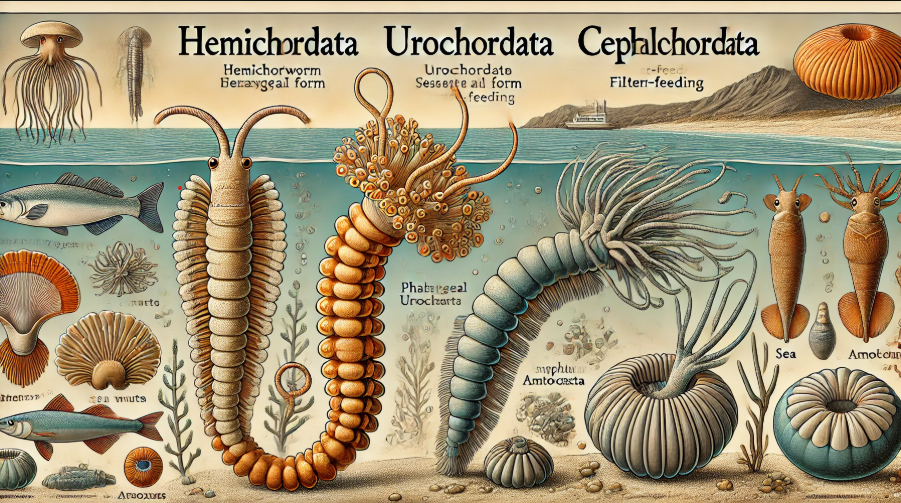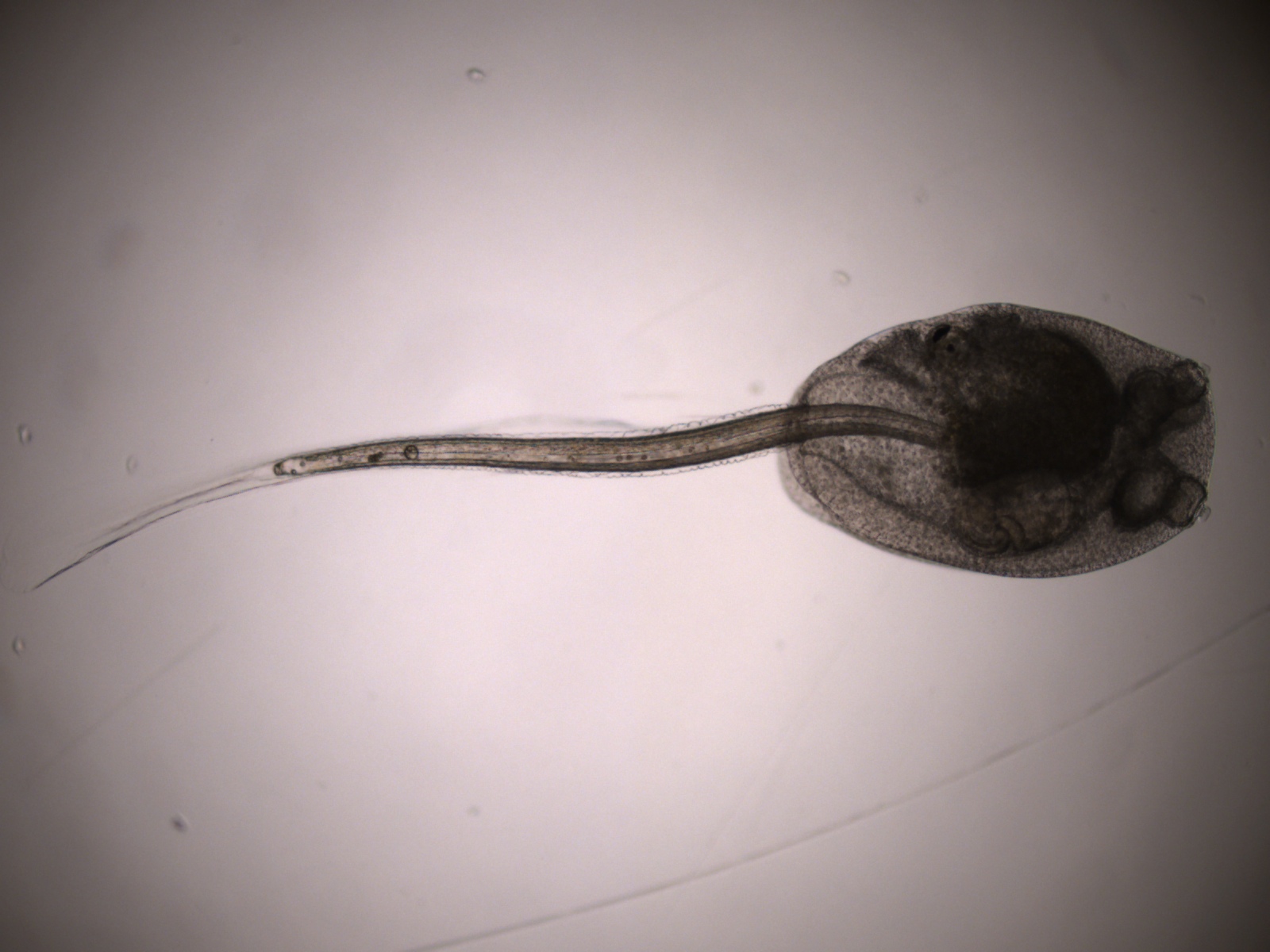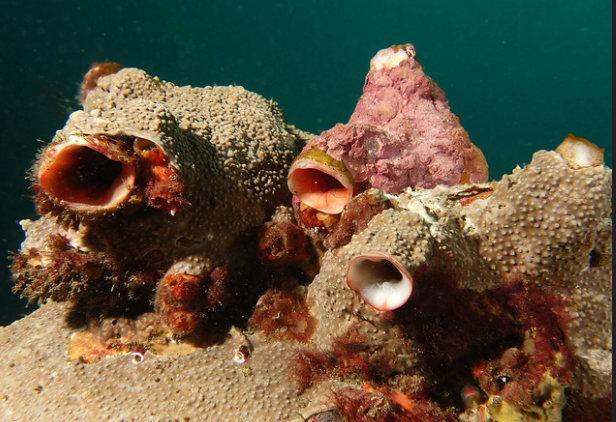Sea Lamprey (Petromyzon marinus) Brief Introduction
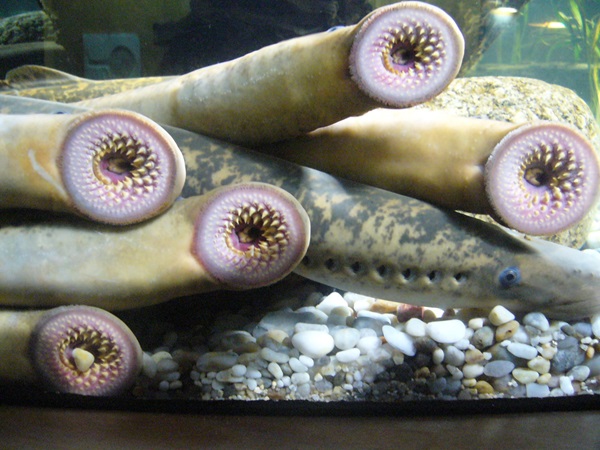
Petromyzon marinus (Sea Lamprey) is an ancient jawless aquatic vertebrate belonging to the class Hyperoartia, often studied as a model organism for understanding early vertebrate evolution. Distributed across regions like North America, Europe, West Africa, Japan, and Australia, it has a significant ecological and evolutionary role.
Classification
- Kingdom: Animalia
- Phylum: Chordata
- Class: Hyperoartia (Jawless vertebrates – Agnatha)
- Order: Petromyzontiformes
- Family: Petromyzontidae
- Genus: Petromyzon
- Species: Petromyzon marinus
Key Species
In the Northern Hemisphere, three notable species of lampreys include
- P. marinus (Sea Lamprey parasitic)
- P. fluviatilis (River Lamprey)
- P. planeri (Brook Lamprey non-parasitic)
Morphological Features and Adaptations of Petromyzon
Body Structure
The Sea Lamprey exhibits an elongated, cylindrical, eel-like body designed for swimming efficiency. It possesses two dorsal fins and an anal fin but lacks paired fins such as pectoral and pelvic fins. The smooth, scaleless skin, rich in mucus glands, minimizes drag and provides protection against pathogens.
The persistent notochord offers structural support, a characteristic shared with early chordates, reflecting its phylogenetic position. The skeleton, made entirely of cartilage, contrasts with the ossified skeletons of more derived vertebrates, emphasizing its primitive nature.
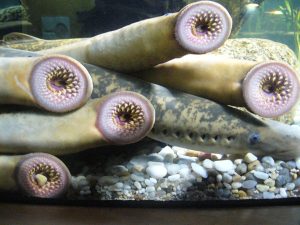
Source – wikipedia
Digestive system
The digestive system of Petromyzon marinus (sea lamprey) is uniquely adapted for ectoparasitism. Its circular oral disc, lined with keratinized teeth, enables firm attachment to host fishes. A specialized rasping tongue scrapes the host’s tissue, exposing blood vessels for feeding. The lamprey’s saliva contains anticoagulants like lamphredin, ensuring continuous blood flow during feeding.
Internally, the digestive system is simple, reflecting its liquid diet. There is no stomach; the esophagus connects directly to the intestine, which features a spiral valve to enhance nutrient absorption. This streamlined system efficiently processes the lamprey’s blood-rich diet with minimal energy expenditure.
These adaptations, including the oral disc, anticoagulant saliva, and simplified gut, showcase the evolutionary specialization of P. marinus for its parasitic lifestyle, providing a window into its ancient lineage and ecological niche.
Respiratory System
Seven pairs of gill slits located laterally support tidal ventilation, enabling respiration even when the organism is attached to a host. The gill lamellae increase the surface area for efficient gas exchange, a critical adaptation for its parasitic lifestyle. Branchial basket structures provide mechanical support to the gill chambers.
Circulatory System
Petromyzon marinus possesses a closed circulatory system:
Heart: A simple two-chambered structure (atrium and ventricle) ensures unidirectional blood flow.
Blood Composition: Nucleated red blood cells (RBCs) with hemoglobin facilitate oxygen transport.
The circulatory system is adapted to its dual lifestyle in freshwater and marine environments, reflecting its osmoregulatory efficiency. Oxygenated blood is distributed from the gills, which function as both respiratory and excretory sites.
Excretory and Osmoregulatory Systems
The Sea Lamprey uses mesonephric kidneys for excretion, primarily eliminating ammonia, categorizing it as ammonotelic. Osmoregulation varies by habitat:
Marine Environment: Manages salt overload through active ion transport.
Freshwater Habitat: Prevents excess water uptake via osmoregulatory mechanisms.
This dual adaptation underscores its anadromous migratory behavior, transitioning between marine and freshwater ecosystems.
Affinities of Hemichordata, Urochordata, and Cephalochordata- Click here
Life Cycle and Reproduction
Petromyzon marinus follows a complex lifecycle that combines parasitic and non-parasitic phases, providing a fascinating case for studying ecological adaptability:
1. Sexual Dimorphism: Male and female lampreys (dioecious) exhibit distinct reproductive roles.
2. Oviparous Reproduction: Females lay eggs in freshwater streams after external fertilization.
3. Larval Stage: The ammocoete larva spends years in sediment, filter-feeding on organic particles.
4. Metamorphosis: The larva transitions into a parasitic juvenile with a fully developed oral disc and eyes.
5. Semelparity: Adults reproduce once and die, highlighting a reproductive strategy optimizing genetic dissemination.
Anadromous migration to spawning grounds exemplifies evolutionary adaptations for species survival in diverse environments.
Feeding and Parasitic Behavior
The adult Sea Lamprey is ectoparasitic, primarily feeding on the blood and tissue of large fish hosts (e.g., salmon, trout). This feeding strategy causes significant host damage, influencing population dynamics.
Non-parasitic forms derive energy from stored reserves, indicating metabolic plasticity. This variation provides valuable insights into energy utilization strategies across ecological niches.
Ecological Role and Invasive Impact
In native ecosystems, Sea Lampreys contribute to predator-prey dynamics. However, invasive populations, particularly in the Great Lakes, have disrupted native fish stocks. Management strategies include:
Chemical Control: Use of lampricides to target larvae.
Physical Barriers: Preventing migration to spawning grounds.
Biological Control: Introducing sterile males to reduce reproduction.
These interventions balance conservation needs with ecological impact mitigation.
Evolutionary Significance
Petromyzon marinus represents a “living fossil,” retaining primitive features like jawlessness and a cartilaginous skeleton. Its study provides insights into vertebrate evolution, particularly the transition from jawless to jawed vertebrates. Genetic studies reveal homologies between lamprey and higher vertebrate developmental pathways, emphasizing its relevance in evolutionary biology.
Conservation and Management
Efforts focus on preserving native populations while controlling invasive ones. Strategies include habitat restoration, genetic monitoring, and regulated fishery practices to ensure sustainable biodiversity.
Read also
- Animal Diversity Web: Petromyzon marinus
- U.S. Geological Survey: Sea Lamprey Species Profile
- U.S. Fish & Wildlife Service: Sea Lamprey
- Britannica: Sea Lamprey
- FishBase: Petromyzon marinus
Hi, I’m Hamid Ali, an MSc in Biotechnology and a passionate Lecturer of Biology with over 11 years of teaching experience. I have dedicated my career to making complex biological concepts accessible and engaging for students and readers alike.
Beyond the classroom, I’m an avid blogger, sharing insights, educational resources, and my love for science to inspire lifelong learning. When I’m not teaching or writing, I enjoy exploring new advancements in biotechnology and contributing to meaningful discussions in the scientific community.
Thank you for visiting my blog! Feel free to connect and explore more of my work.




